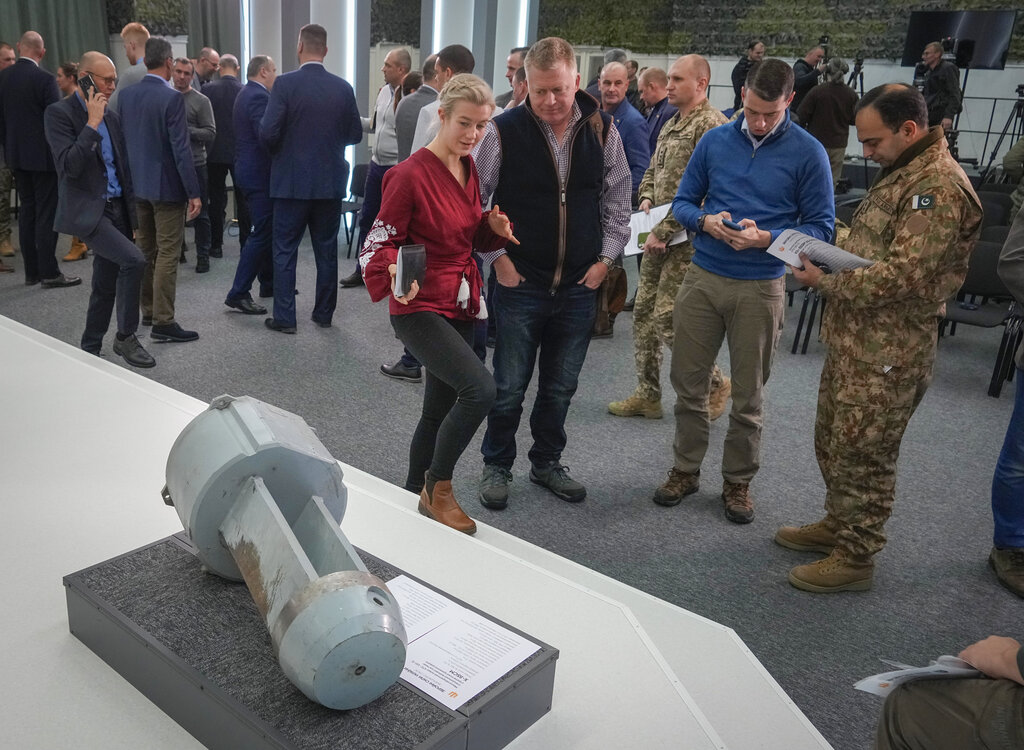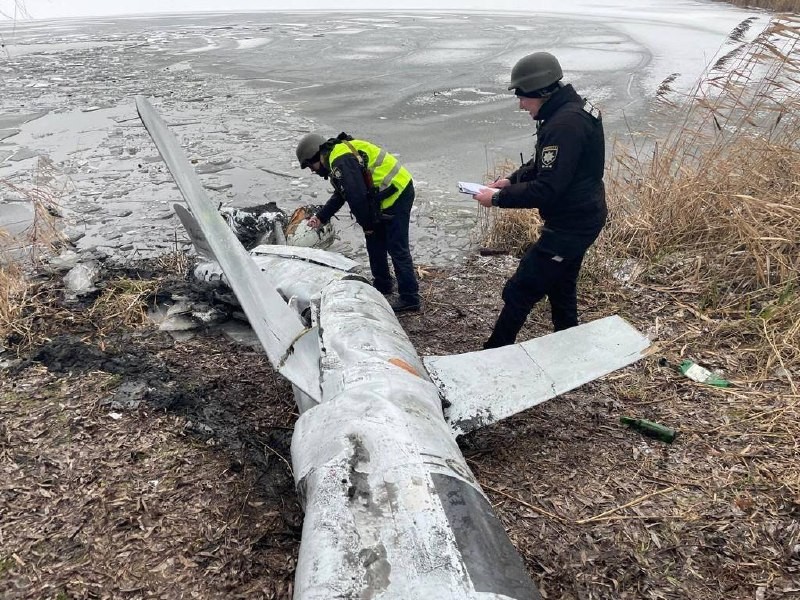Blowback: Russia Attacks Ukraine With Bombers and Missiles That It Bought From Ukraine in 1999
Soviet-era weapons were transferred to Russia a generation ago in a deal for natural gas and signed by Putin.

Almost a quarter-century ago, Ukraine sold Soviet-era cruise missiles to Russia to cancel a natural gas debt. Now Russia is pulling these same rockets out of storage to rain death and destruction on Ukraine, according to a new investigation by Radio Free Europe.
“We found more than a dozen missiles used by Russia in attacks on Ukraine in the list of missiles handed over to Moscow by Kyiv in 1999,” a reporter with RFE’s Scheme’s investigative unit, Serhiy Andrushko, reports.
Against a backdrop of burning Kyiv apartments, where a woman was killed this spring, the report intones: “This missile is number 472 on the list — 5115251012108.”
The list is an official inventory of 575 KH-55 rockets delivered to Russia in late 1999 as part of the weapons-for-gas deal. Reporters and forensic investigators simply cross-checked this inventory with serial numbers stenciled in white paint on tail fins or wings of cruise missile wreckage recovered in Ukraine.

Many are fired without explosive warheads, part of a tactic to overwhelm Ukrainian air defenses with a simultaneous barrage of 100 incoming missiles. Nose cones often are filled with cement, raising the rocket weight to two tons.
Reflecting the integrated economy of the Soviet Union in the 1980s, the cruise missiles were largely made in Soviet Ukraine. All the turbofan rocket engines were fabricated by Motor Sich, an aircraft engine plant at Zaporizhia, an industrial city 20 miles north of today’s front line. Cruise missile bodies were often made at the Kharkiv State Aviation Plant, an industrial complex in eastern Ukraine that suffered heavy Russian shelling last year.
At the time of the $285 million deal trading weapons for gas, Western attention largely focused on the eye-catching warplane component. Ukraine sold eight Ukrainian Tu-160s. Codenamed Blackjack by NATO, the Tu-160 was the last strategic bomber designed for the Soviet Union. Capable of flying at Mach 2, the Tu-160 is still the fastest bomber in use and the largest and heaviest variable-sweep wing airplane ever flown.
The deal also included three Tu-95 MS “Bear” bombers, according to a chronology by the Nuclear Threat Initiative, a Washington think tank. Both of these Tupolev bombers can fire Kh-55 cruise missiles. The Tu-95s can carry 16 missiles: 10 under the wings and six in a rotary launcher.
“I would have preferred to see the Ukrainians destroy the bombers — they were originally built to strike targets in America,” Steven Pifer, then America’s ambassador to Ukraine, told The New York Sun. Now a senior fellow at Brookings, Mr. Pifer said Ukraine was under pressure to meet a 2001 arms-reduction deadline inherited from Soviet obligations in the 1991 Strategic Arms Reduction Treaty.

“Transfer was a legitimate way for Ukraine to ‘eliminate’ the bombers from its count,” Mr. Pifer said from Washington. “I do not recall that we at the Embassy heard that Ukraine was also transferring to Russia some of the air-launched cruise missiles that had armed the heavy bombers that Ukraine inherited when the Soviet Union collapsed.”
On November 16, 1998, at northeast Ukraine’s Pryluky air base, as television cameras whirred and Senators Lugar and Levin watched, the first Tu-160 was chopped up with a special metal cutting tool imported by Raytheon. In Ukraine, the bomber destruction program was funded with $10 million under the Nunn-Lugar Cooperative Threat Reduction program. The saga is captured in a YouTube video: “How America destroyed Ukraine’s best Military device, the Tu 160 Bomber.”
The next month, the Pentagon and Ukraine’s defense ministry signed an agreement for the destruction of 44 Ukrainian heavy bombers and 1,068 Kh-55 cruise missiles, Dario Leone wrote on the Aviation Geek news site.
These American actions prompted Russia’s newly appointed Security Council secretary, Vladimir Putin, to break with six years of inconclusive talks with Ukraine. In August 1999, days after Mr. Putin became prime minister, he signed the deal to cancel much of Ukraine’s gas debt in exchange for the Soviet-era bombers and missiles.
Since then, Ukraine has been playing catchup. In the first days of the war, Tu-160s were detected firing missiles into Ukraine. With a range of 1,500 miles, the missiles can be fired from the safety of Russian air space and reach any spot in Ukraine. In response, Ukraine launched three drone attacks last December on the main air base for the strategic bombers, Engels-2.
Although the base is 600 miles east of Ukraine, drones managed to hit the base twice, damaging two Tu-95 “Bear” bombers and killing three airmen on the ground.
Today, the only consolation for Ukraine is the knowledge that Russia is resorting to firing 40-year-old cruise missiles. “It takes time to manufacture new missiles,” a Ukrainian forensic expert, Oleksandr Vysikan, tells Radio Free Europe. “Russia is using whatever it can.”

